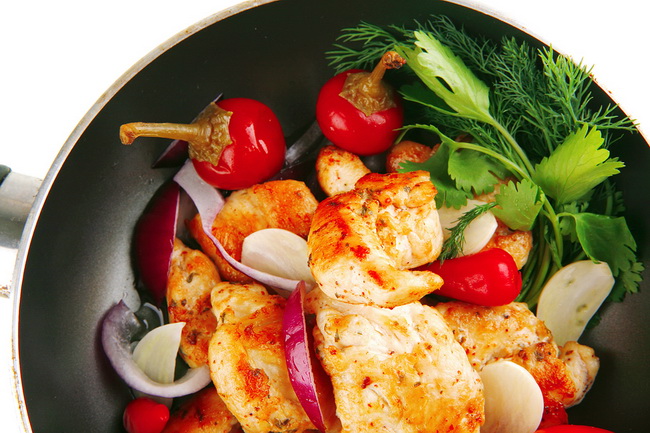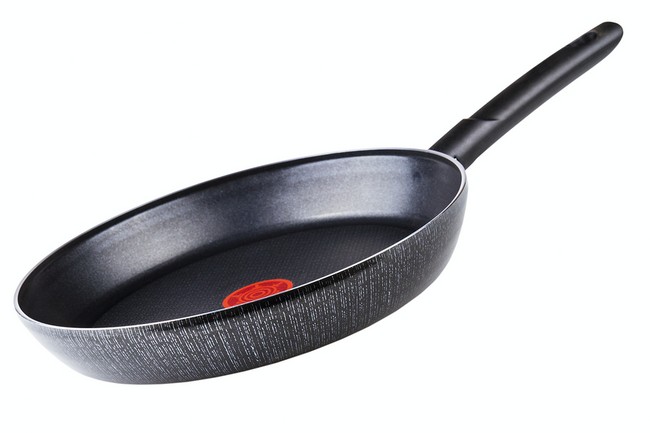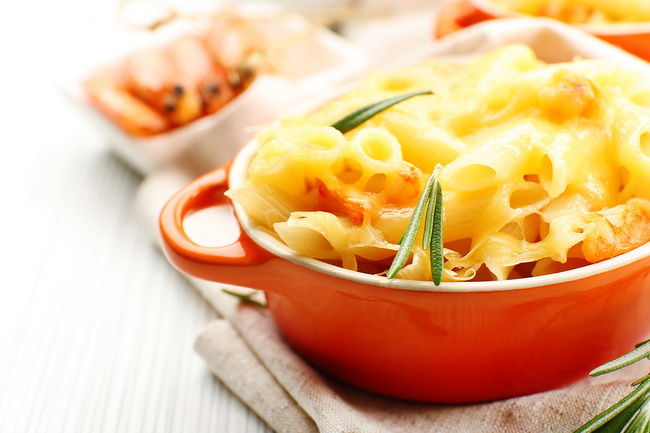- Make It Yourself Lavender Heart-Shaped Bath Bombs!
- 20 Things You Never Knew About “Down There”
- 12 Best Foods For Those Suffering From Arthritis Pain
- 12 Personal Hygiene Mistakes Almost Everyone Makes (Mom Never Told You About #4!)
- 15 Medicinal Plants And Herbs From The Cherokee People
- 12 Mind-Blowing Benefits Of Drinking Coconut Water During Pregnancy
- 12 Outstanding Winter Foods That Won’t Fatten You Up Like A Christmas Turkey
The Killer in Your Kitchen: The One Item You Probably Use Everyday

Photo credit: bigstock.com
Although you wouldn’t dream of keeping poisons in your pantry, or anywhere near where you are cooking and preparing meals, you probably do have a deadly toxin right in your kitchen cabinets that you are completely unaware of. Worse than that, you probably cook with it almost every day, slowly poisoning yourself and your family bit by bit. What is the killer that is lurking in your kitchen cabinets?
Teflon coated pans, also known as non-stick cookware.
They look harmless enough, true, but did you know that the substance that Teflon is made from is a deadly toxin if you ingest or inhale enough of it? Damaged pans, where the Teflon is chipped or scratched, releases even more of these toxins into your food than newer or non-damaged pans.
Did you know that should your Teflon coated pan get overheated, it releases enough toxic gases that can kill birds outright? It’s true. This is one reason you should never keep your pet canary or parakeet anywhere near the kitchen! Think about this, though: if the gas from this cookware can kill a small animal almost immediately, what kind of damage is it doing to you and your family?
Why is this simple item so dangerous? It’s the chemicals that make up that non-stick part of the pan. First, it’s made from chemicals that the human body was never intended to digest. The main part of what makes up Teflon has a long and ominous sounding name: perfluorooctanoic acid, or PFOA. When you heat your non-stick pan over a very high flame it releases many of its carcinogenic chemicals. At 1,000 degrees, your non-stick pan will release a chemical called PFIB, a nerve agent. Teflon was originally a waste product from the production of Freon, the gas that is used in your refrigerator and air conditioner.
Continue to Page 2

Photo credit: bigstock.com
You might think you are safe because you don’t overheat your pans, but it really doesn’t take that much to release these gasses. If you have ever burned food or accidently preheated your oven with a pan left inside of it, then you have reached sufficient temperatures to release these dangerous gasses. Even just heating a pan to about 400 degrees can expose you to fumes that can cause flu like symptoms. This condition is well known and is called polymer fume fever. The creator of the brand name Teflon, DuPont, dismisses this as a “mild” reaction.
Many people also mistakenly believe that if they don’t use metal utensils on their non-stick pans that they are safe to use, but this isn’t true. Although scratching your pan with metal utensils do make them release even MORE chemicals, even if you use plastic utensils, these pans still release dangerous toxic gasses into the air. It’s the heat involved, as well as the utensils you use.
You should also be aware that the older your non-stick pans become, the more chemicals they release. So if you are cooking with old non-stick pans, you are probably not only breathing the fumes, but eating these chemicals as well, every single time you cook with them! This means that you are accumulating dangerous chemical contaminants in your environment, as well as in your diet every time you use them. Unfortunately, this is nothing new; almost all Americans have some sort of chemical from their non-stick pans in their blood, with some estimating as high as 98 percent of the population! Read more about shocking sources polluting the air inside your home.
If you thought the FDA or some other governmental agency was going to keep you safe, think again. There are no regulations for cookware. You might see some warning labels on new pans telling you to keep birds out of your kitchen, but that’s about it. Veterinarians will tell you that they see hundreds of bird deaths every year from Teflon toxicity.
Continue to Page 3

Photo credit: bigstock.com
The bottom line is that you really should avoid all non-stick cookware whenever possible. Especially if the pans are old, scratched chipped, or damaged in any way. The government doesn’t appear to have any interest in the chemical contaminants of our cookware, so you will need to take full responsibility for being aware and protecting your family (and your pets) from this killer in your kitchen.
The good news is that there are many other types of cookware available. Glass and glazed clay are terrific for cooking. If you have never had bread or pizza that has been cooked on top of a real baking stone, you don’t know what you are missing! Copper and stainless steel pans are the ones many professional chefs use, and those old fashioned cast iron pots and pans never wear out! In fact, they are a great way to get some iron in your diet and they only improve with age! A well-seasoned cast iron pan is a real pleasure to use, as the heat is evenly distributed and food rarely sticks when cooked properly. Most sticking issues come from using too high a flame, not from the pan itself.
Ceramic cookware is another great choice. They tend to be just as “non-stick” as Teflon coated pan, without the dangerous chemicals. They are super heat resistant too, with a safety rating of 850 degrees. Ceramic coated cookware conducts heat better than most traditional cookware and has absolutely no dangerous pollutants or toxic chemicals.
SEE ALSO: Top Kitchen Items that make Perfect Natural Home Remedies
Although there are plenty of cheap aluminum pans around, you should think twice about using those as well. The aluminum does come off the pans in small amounts and some studies show that aluminum builds up in the brain and might be one of the causes of Alzheimer’s. With all the other great alternatives around, why use aluminum? Copper, ceramic, stainless steel, cast iron, or clay are all terrific, safe alternatives.
Sources:

































David Lee
Feb 10, 2015 at 2:19 am
Whenever I use non-stick pans, I line them with tinfoil and then add enough water into the pan under the tinfoil to keep the food below 220 degrees as it cooks and that also keeps the pan cooler. Every time the water gets low, I add more.
CAPERNIUS
Feb 12, 2015 at 5:11 pm
I refuse to use non stick cookware….of ANY kind.
I refuse to use Aluminum as well(associated with alzheimer’s disease).
Experience has taught me that I can get BETTER results without it…
So I use cast iron, stainless steel, & copper pots & pans…
a wee bit of iron in your system(coming off the cast iron) is actually good for you & the same goes for the copper…
Now the stainless steel, I just use it because it last longer than anything else save the cast iron.